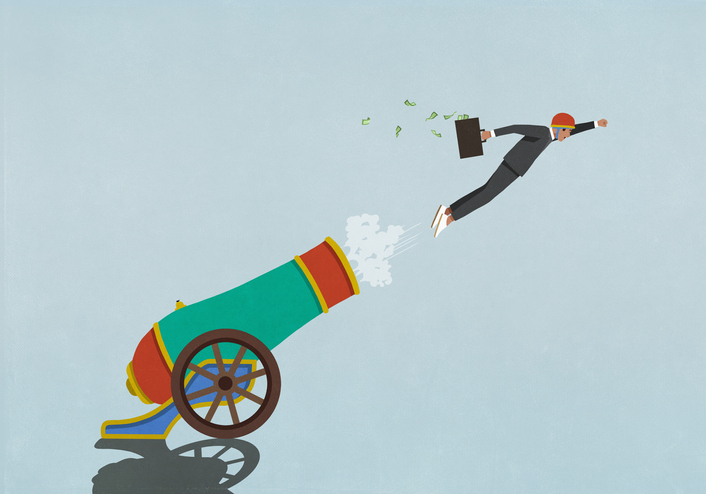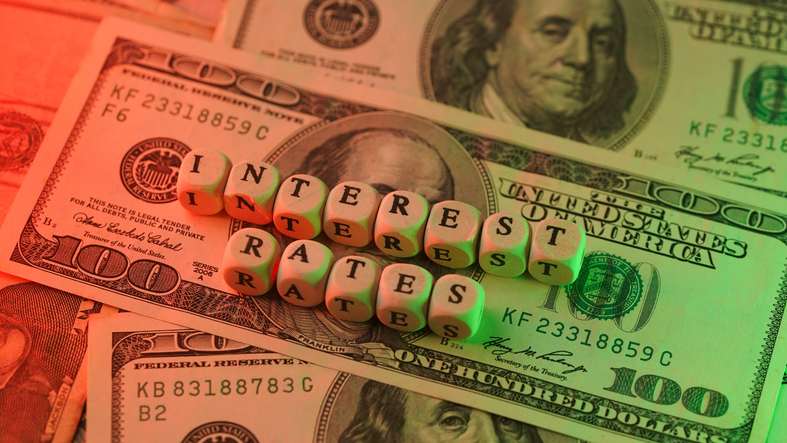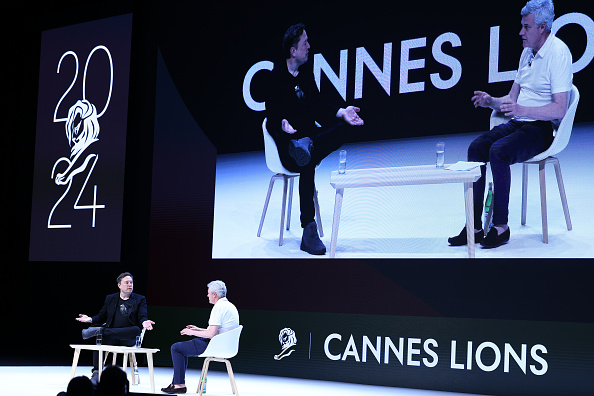The Stock Market’s Future Ain’t What It Used to Be
In recent years, investors often were rewarded for taking reckless risks, but in unforgiving markets, it’s harder to recover from mistakes.
With U.S. stocks off more than 7% and the bond market down almost 9% so far this year, many investors seem to feel they have to take more risk to catch up.
In fact, you should take less. In unforgiving markets, it’s harder to recover from mistakes. Over the past decade or more, stocks, bonds, real estate and cryptocurrencies—just about every asset—boomed. You often got rewarded for reckless risks and, even if you got punished, rising markets helped you recover quickly from your blunders. That won’t last forever.
A global survey of nearly 300 professional investors by BofA Global Research found in March that the percentage of fund managers with greater than average exposure to U.S. stocks climbed 27 percentage points from February. That happened even as many of them say their holdings of cash have edged up.
And fund managers’ trigger fingers are itching even worse than usual, with 42% reporting that their investment horizon is three months or less, up from 26% the previous month.
Individual investors don’t seem to be pulling in their horns, either.
“Alternatives” such as private equity, private debt, hedge funds and nontraded real estate have become so fashionable that investors are forsaking flexibility and low fees in order to buy them.
One of the most popular ways to invest in alternatives is through unlisted closed-end funds, portfolios of alternative assets that are registered with the Securities and Exchange Commission but don’t trade on an exchange.
Investors generally can’t get their money out daily, as they can at traditional mutual funds or exchange-traded funds. Instead, they can sell only at predetermined times, often four times a year, sometimes only twice—or even whenever the fund manager happens to permit it.
Holding on for years could help the managers produce gains; in the meantime, it enables them to harvest fat fees. Management expenses often exceed 1.5% annually. Such funds managed a total of $93.7 billion at the end of 2021, up from $54 billion in 2018, according to Patrick Newcomb, a director at Fuse Research Network in Needham, Mass.
The glory days for approaches like these are probably over, says Antti Ilmanen, an investment strategist at AQR Capital Management in Greenwich, Conn. He’s the author of a new book, “Investing Amid Low Expected Returns.”
Mr. Ilmanen’s volume isn’t beach reading; it’s full of subtleties and complexities. But its message is stark and simple. With many assets still near all-time highs, future returns will likely be lower, says Mr. Ilmanen—across the board, for traded and untraded investments alike.
Yes, I know: That’s what many market commentators have been saying for years. And the markets kept going up anyway. Isn’t this just more negativism?
Nope. High recent returns make you feel rich, naturally leading you to extrapolate further gains. But you’re just borrowing them from the future. The more highly valued your holdings are, the lower their return is likely to be down the road.
To see why, let’s pretend you own a hypothetical bond. To keep things as simple as possible, imagine a plain $1,000 bond paying 3% a year for 10 years.
If you buy it for $1,000, this bond’s $30 annual interest would earn you a 3% yield. If, however, you pay $1,200 for a bond with the same terms, your $30 interest yields you 2.5%.
The higher the price you pay, the lower your return on the bond; there’s no way around it.
Unlike with a bond, a stock’s future income stream can grow. If it doesn’t meet expectations, though, the same general principle applies—without any assurance of getting your original investment back in the end.
To make general judgments of how expensive stocks are, Mr. Ilmanen uses a modified version of a measure developed by Yale University economist Robert Shiller. Mr. Ilmanen’s math indicates that U.S. stocks could return less than 3% annually, after inflation, over the next five years or more—among its lowest estimates ever. Although you can’t use such data to tell exactly when stocks are overpriced, says Mr. Ilmanen, “the message is that the prospect of low expected returns should be taken seriously.”
What can investors do? A few suggestions are obvious.
Save more, spend less (especially on investment-management fees).
Avoid chasing illiquid assets—some of which, like private equity, are no longer definitively cheap relative to publicly traded stocks, Mr. Ilmanen’s research suggests.
Look outside the U.S., where stocks are considerably cheaper.
Above all, don’t take bigger gambles to try catching up. Riskier holdings, such as untraded equity and bonds, have looked safe during the bull markets of the last decade. But they could deliver “bad returns in bad times” that aren’t as fleeting as early 2020, says Mr. Ilmanen.
“If we get rising yields [as interest rates go up], more valuations will be challenged,” he says. “If you take less risk now, not more, you will be able to swing at the fat pitches when they come.”
Reprinted by permission of The Wall Street Journal, Copyright 2021 Dow Jones & Company. Inc. All Rights Reserved Worldwide. Original date of publication: April 15, 2022
 Copyright 2020, Dow Jones & Company, Inc. All Rights Reserved Worldwide. LEARN MORE
Copyright 2020, Dow Jones & Company, Inc. All Rights Reserved Worldwide. LEARN MORE
This stylish family home combines a classic palette and finishes with a flexible floorplan
Just 55 minutes from Sydney, make this your creative getaway located in the majestic Hawkesbury region.
Continued stagflation and cost of living pressures are causing couples to think twice about starting a family, new data has revealed, with long term impacts expected
Australia is in the midst of a ‘baby recession’ with preliminary estimates showing the number of births in 2023 fell by more than four percent to the lowest level since 2006, according to KPMG. The consultancy firm says this reflects the impact of cost-of-living pressures on the feasibility of younger Australians starting a family.
KPMG estimates that 289,100 babies were born in 2023. This compares to 300,684 babies in 2022 and 309,996 in 2021, according to the Australian Bureau of Statistics (ABS). KPMG urban economist Terry Rawnsley said weak economic growth often leads to a reduced number of births. In 2023, ABS data shows gross domestic product (GDP) fell to 1.5 percent. Despite the population growing by 2.5 percent in 2023, GDP on a per capita basis went into negative territory, down one percent over the 12 months.
“Birth rates provide insight into long-term population growth as well as the current confidence of Australian families,” said Mr Rawnsley. “We haven’t seen such a sharp drop in births in Australia since the period of economic stagflation in the 1970s, which coincided with the initial widespread adoption of the contraceptive pill.”
Mr Rawnsley said many Australian couples delayed starting a family while the pandemic played out in 2020. The number of births fell from 305,832 in 2019 to 294,369 in 2020. Then in 2021, strong employment and vast amounts of stimulus money, along with high household savings due to lockdowns, gave couples better financial means to have a baby. This led to a rebound in births.
However, the re-opening of the global economy in 2022 led to soaring inflation. By the start of 2023, the Australian consumer price index (CPI) had risen to its highest level since 1990 at 7.8 percent per annum. By that stage, the Reserve Bank had already commenced an aggressive rate-hiking strategy to fight inflation and had raised the cash rate every month between May and December 2022.
Five more rate hikes during 2023 put further pressure on couples with mortgages and put the brakes on family formation. “This combination of the pandemic and rapid economic changes explains the spike and subsequent sharp decline in birth rates we have observed over the past four years,” Mr Rawnsley said.
The impact of high costs of living on couples’ decision to have a baby is highlighted in births data for the capital cities. KPMG estimates there were 60,860 births in Sydney in 2023, down 8.6 percent from 2019. There were 56,270 births in Melbourne, down 7.3 percent. In Perth, there were 25,020 births, down 6 percent, while in Brisbane there were 30,250 births, down 4.3 percent. Canberra was the only capital city where there was no fall in the number of births in 2023 compared to 2019.
“CPI growth in Canberra has been slightly subdued compared to that in other major cities, and the economic outlook has remained strong,” Mr Rawnsley said. “This means families have not been hurting as much as those in other capital cities, and in turn, we’ve seen a stabilisation of births in the ACT.”
This stylish family home combines a classic palette and finishes with a flexible floorplan
Just 55 minutes from Sydney, make this your creative getaway located in the majestic Hawkesbury region.






















